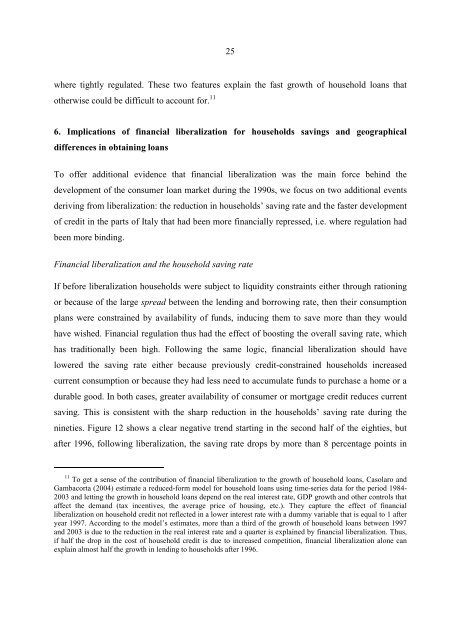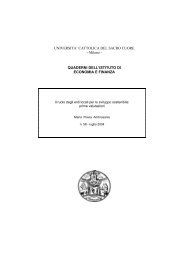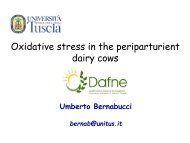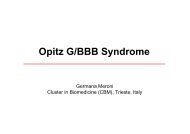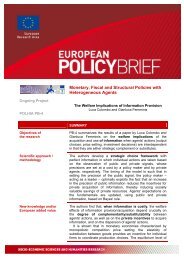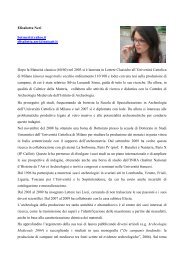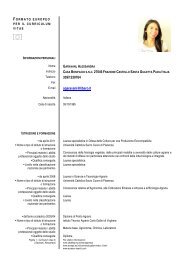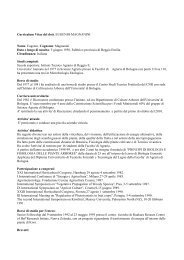REGULATION, FORMAL AND INFORMAL ... - ResearchGate
REGULATION, FORMAL AND INFORMAL ... - ResearchGate
REGULATION, FORMAL AND INFORMAL ... - ResearchGate
Create successful ePaper yourself
Turn your PDF publications into a flip-book with our unique Google optimized e-Paper software.
25<br />
where tightly regulated. These two features explain the fast growth of household loans that<br />
otherwise could be difficult to account for. 11<br />
6. Implications of financial liberalization for households savings and geographical<br />
differences in obtaining loans<br />
To offer additional evidence that financial liberalization was the main force behind the<br />
development of the consumer loan market during the 1990s, we focus on two additional events<br />
deriving from liberalization: the reduction in households’ saving rate and the faster development<br />
of credit in the parts of Italy that had been more financially repressed, i.e. where regulation had<br />
been more binding.<br />
Financial liberalization and the household saving rate<br />
If before liberalization households were subject to liquidity constraints either through rationing<br />
or because of the large spread between the lending and borrowing rate, then their consumption<br />
plans were constrained by availability of funds, inducing them to save more than they would<br />
have wished. Financial regulation thus had the effect of boosting the overall saving rate, which<br />
has traditionally been high. Following the same logic, financial liberalization should have<br />
lowered the saving rate either because previously credit-constrained households increased<br />
current consumption or because they had less need to accumulate funds to purchase a home or a<br />
durable good. In both cases, greater availability of consumer or mortgage credit reduces current<br />
saving. This is consistent with the sharp reduction in the households’ saving rate during the<br />
nineties. Figure 12 shows a clear negative trend starting in the second half of the eighties, but<br />
after 1996, following liberalization, the saving rate drops by more than 8 percentage points in<br />
11 To get a sense of the contribution of financial liberalization to the growth of household loans, Casolaro and<br />
Gambacorta (2004) estimate a reduced-form model for household loans using time-series data for the period 1984-<br />
2003 and letting the growth in household loans depend on the real interest rate, GDP growth and other controls that<br />
affect the demand (tax incentives, the average price of housing, etc.). They capture the effect of financial<br />
liberalization on household credit not reflected in a lower interest rate with a dummy variable that is equal to 1 after<br />
year 1997. According to the model’s estimates, more than a third of the growth of household loans between 1997<br />
and 2003 is due to the reduction in the real interest rate and a quarter is explained by financial liberalization. Thus,<br />
if half the drop in the cost of household credit is due to increased competition, financial liberalization alone can<br />
explain almost half the growth in lending to households after 1996.


